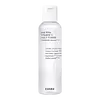What's inside
What's inside
 Key Ingredients
Key Ingredients

 Benefits
Benefits

 Concerns
Concerns

 Ingredients Side-by-side
Ingredients Side-by-side

Actinidia Chinensis Fruit Extract
EmollientHylocereus Undatus Fruit Extract
Skin ConditioningSalix Alba Bark Water
AstringentPyrus Malus Fruit Water
MaskingButylene Glycol
HumectantNiacinamide
Smoothing1,2-Hexanediol
Skin ConditioningEthyl Hexanediol
SolventSodium Lactate
BufferingWater
Skin ConditioningGlycolic Acid
BufferingAllantoin
Skin ConditioningPanthenol
Skin ConditioningAdenosine
Skin ConditioningBetaine Salicylate
AntimicrobialAscorbyl Glucoside
AntioxidantWater
Skin ConditioningMethyl Gluceth-20
HumectantAlcohol
AntimicrobialNiacinamide
SmoothingButylene Glycol
HumectantBeta-Glucan
Skin ConditioningGlycerin
HumectantBetaine
HumectantAcrylates/C10-30 Alkyl Acrylate Crosspolymer
Emulsion StabilisingTriethanolamine
BufferingAllantoin
Skin ConditioningColloidal Sulfur
AntimicrobialChlorphenesin
AntimicrobialZanthoxylum Piperitum Fruit Extract
Skin ConditioningPulsatilla Koreana Extract
Skin ConditioningUsnea Barbata Extract
Adenosine
Skin ConditioningSalvia Sclarea Extract
AntiseborrhoeicHyacinthus Orientalis Extract
Skin ConditioningPropanediol
SolventEDTA
Zingiber Officinale Root Extract
MaskingCamellia Japonica Leaf Extract
Skin ConditioningSalicylic Acid
MaskingPhellodendron Amurense Bark Extract
Skin ConditioningCitrus Paradisi Seed Extract
MaskingMagnolia Officinalis Bark Extract
AntimicrobialSophora Angustifolia Root Extract
Skin ConditioningCitrus Paradisi Fruit Extract
Skin Conditioning1,2-Hexanediol
Skin ConditioningSalix Alba Bark Extract
AstringentBenzyl Alcohol
PerfumingLavandula Angustifolia Water
MaskingBorago Officinalis Extract
EmollientChamomilla Recutita Flower/Leaf Extract
AntimicrobialCentaurea Cyanus Flower Extract
AstringentOvalicin
AntimicrobialEthylhexylglycerin
Skin ConditioningMelaleuca Alternifolia Leaf Oil
AntioxidantWater, Methyl Gluceth-20, Alcohol, Niacinamide, Butylene Glycol, Beta-Glucan, Glycerin, Betaine, Acrylates/C10-30 Alkyl Acrylate Crosspolymer, Triethanolamine, Allantoin, Colloidal Sulfur, Chlorphenesin, Zanthoxylum Piperitum Fruit Extract, Pulsatilla Koreana Extract, Usnea Barbata Extract, Adenosine, Salvia Sclarea Extract, Hyacinthus Orientalis Extract, Propanediol, EDTA, Zingiber Officinale Root Extract, Camellia Japonica Leaf Extract, Salicylic Acid, Phellodendron Amurense Bark Extract, Citrus Paradisi Seed Extract, Magnolia Officinalis Bark Extract, Sophora Angustifolia Root Extract, Citrus Paradisi Fruit Extract, 1,2-Hexanediol, Salix Alba Bark Extract, Benzyl Alcohol, Lavandula Angustifolia Water, Borago Officinalis Extract, Chamomilla Recutita Flower/Leaf Extract, Centaurea Cyanus Flower Extract, Ovalicin, Ethylhexylglycerin, Melaleuca Alternifolia Leaf Oil
 Reviews
Reviews

Ingredients Explained
These ingredients are found in both products.
Ingredients higher up in an ingredient list are typically present in a larger amount.
1,2-Hexanediol is a synthetic liquid and another multi-functional powerhouse.
It is a:
- Humectant, drawing moisture into the skin
- Emollient, helping to soften skin
- Solvent, dispersing and stabilizing formulas
- Preservative booster, enhancing the antimicrobial activity of other preservatives
Adenosine is in every living organism. It is one of four components in nucleic acids that helps store our DNA.
Adenosine has many benefits when used. These benefits include hydrating the skin, smoothing skin, and reducing wrinkles. Once applied, adenosine increases collagen production. It also helps with improving firmness and tissue repair.
Studies have found adenosine may also help with wound healing.
In skincare products, Adenosine is usually derived from yeast.
Learn more about AdenosineAllantoin is a soothing ingredient known for its protective and moisturizingg properties. Because of this, it is often added to products with strong active ingredients.
Studies show higher concentrations of this ingredient can promote wound healing.
Though it can be derived from the comfrey plant, allantoin is produced synthetically for cosmetic products to ensure purity.
Learn more about AllantoinButylene Glycol (or BG) is used within cosmetic products for a few different reasons:
Overall, Butylene Glycol is a safe and well-rounded ingredient that works well with other ingredients.
Though this ingredient works well with most skin types, some people with sensitive skin may experience a reaction such as allergic rashes, closed comedones, or itchiness.
Learn more about Butylene GlycolNiacinamide is a multitasking form of vitamin B3 that strengthens the skin barrier, reduces pores and dark spots, regulates oil, and improves signs of aging.
And the best part? It's gentle and well-tolerated by most skin types, including sensitive and reactive skin.
You might have heard of "niacin flush", or the reddening of skin that causes itchiness. Niacinamide has not been found to cause this.
In very rare cases, some individuals may not be able to tolerate niacinamide at all or experience an allergic reaction to it.
If you are experiencing flaking, irritation, and dryness with this ingredient, be sure to double check all your products as this ingredient can be found in all categories of skincare.
When incorporating niacinamide into your routine, look out for concentration amounts. Typically, 5% niacinamide provides benefits such as fading dark spots. However, if you have sensitive skin, it is better to begin with a smaller concentration.
When you apply niacinamide to your skin, your body converts it into nicotinamide adenine dinucleotide (NAD). NAD is an essential coenzyme that is already found in your cells as "fuel" and powers countless biological processes.
In your skin, NAD helps repair cell damage, produce new healthy cells, support collagen production, strengthen the skin barrier, and fight environmental stressors (like UV and pollution).
Our natural NAD levels start to decline with age, leading to slower skin repair, visible aging, and a weaker skin barrier. By providing your skin niacinamide, you're recharging your skin's NAD levels. This leads to stronger, healthier, and younger looking skin.
Another name for vitamin B3 is nicotinamide. This vitamin is water-soluble and our bodies don't store it. We obtain Vitamin B3 from either food or skincare. Meat, fish, wheat, yeast, and leafy greens contain vitamin B3.
The type of niacinamide used in skincare is synthetically created.
Learn more about NiacinamideWater. It's the most common cosmetic ingredient of all. You'll usually see it at the top of ingredient lists, meaning that it makes up the largest part of the product.
So why is it so popular? Water most often acts as a solvent - this means that it helps dissolve other ingredients into the formulation.
You'll also recognize water as that liquid we all need to stay alive. If you see this, drink a glass of water. Stay hydrated!
Learn more about Water